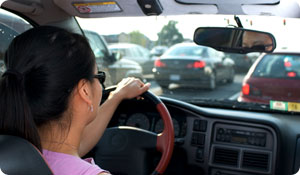
Did you know that if your house is near a busy road, you could be putting yourself at risk for greater problems with your asthma? Some scientists believe that there's a strong link between how close you live to a high traffic area and the course your asthma takes. This is mainly due to the fact that exhaust from cars and trucks could likely be impacting your breathing capacity.
Where You Live Matters for Pollution and Asthma
Consider the fact that the number of people with asthma has been on the rise in recent decades. So, too, has the number of cars on the road, causing some researchers to hypothesize that these two factors could be connected. Further making the case for the pollution and asthma link is the fact that more asthmatics seem to live in big cities than in more rural areas. This makes sense when you realize that people in urban areas are in contact with more traffic and the pollution that goes along with it. Therefore, if you live in a busy area, it isn't such a leap to think that the cars that pass by your home could be making you cough and wheeze.
Research Findings on Pollution and Asthma
If you have asthma and are also exposed to heavy traffic on a regular basis, though, you may still wonder exactly how these two things interrelate. Scientists believe that the connection can be traced back to nitrogen dioxide (NO2), which is a pollutant in the air that comes from car exhaust. The presence of it can irritate your lungs and cause asthma symptoms to flare.
Pollution and Asthma: The Effect on Kids
While car pollution and asthma seems to be an issue for people of all ages, children could be particularly susceptible to the relationship. A study conducted by British researchers that was published in the American Journal of Respiratory and Critical Care Medicine in 2007 reveals that children who live closer to heavily trafficked roads (within 450 feet) have a higher likelihood of wheezing than do their counterparts who live in less traveled neighborhoods.
Further, the closer the youngsters live to the road, the higher the risk seems to be. For every 90-foot closer than a child lives, the risk of symptoms increases by 8 percent among elementary school-age kids and by 16 percent among secondary school students. In addition, girls seem more prone to the effects than boys.
Take Note
Of course if you live on a busy street, you may not be able to pick up and move locations, no matter how much that might help you to breathe. But if you're considering moving to a new home anyway, selecting a place off-the-beaten path may indeed prove to be a good choice today.
Sources:
American Journal of Respiratory and Critical Care Medicine
http://ajrccm.atsjournals.org/cgi/content/abstract/176/12/1236
http://ajrccm.atsjournals.org/cgi/content/full/162/1/161
International Journal of Health Geographics





